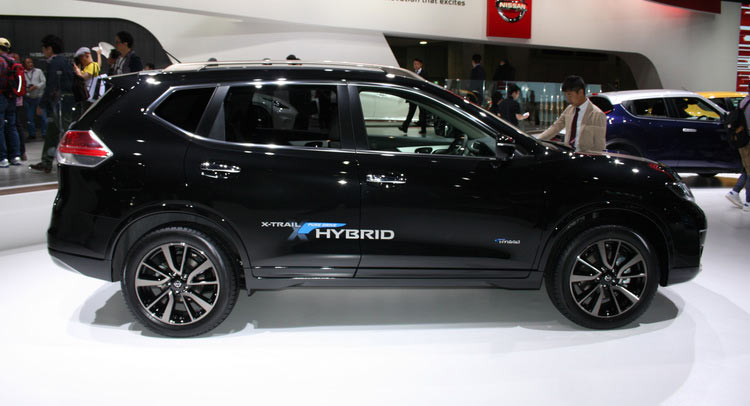Earlier this spring we had Nissan introduce the X-Trail Hybrid in Japan, a car that’s as unassuming on the outside as it is economical on the road.
With this Hybrid version, the X-Trail can better serve Nissan in their fight against Toyota for one, as a cheaper alternative to the latter’s Harrier Hybrid. The X-Trail’s hybrid power unit consists of a 2.0-liter petrol engine, good for 145 HP and 207 Nm (153 lb-ft) of torque, in addition to a RM31 electric motor with a maximum output of 30 kW (40 HP) and 160 Nm (118 lb-ft).
The system also benefits from having a fast charging lithium-ion battery and Nissan’s XTronic CVT transmission handling the load, helping the X-Trail achieve a fuel economy of 4.8 liters/100 km (48.5 mpg US / 58.2 mpg UK).
In terms of performance, the X-Trail Hybrid is also quite a lively car thanks to its Intelligent Dual Clutch Control. This system works by delivering engine and motor energy to the transmission mechanically, without utilizing a motor assist or a torque converter.
For practical reasons, this latest generation X-Trail has proven to be a success. The car is roomy (even has a 7-seat version), has plenty of storage spaces, good safety gear and an above average quality interior.
Unfortunately, other markets have to make due with either a petrol or a diesel version when it comes to the X-Trail (also known as Rogue in the US). Speaking of which, US buyers do get a 2.5 liter 170 HP engine, whereas in Europe the X-Trail comes with a 163 PS 1.6 liter turbocharged engine and a 130 HP turbodiesel unit.
The 1.6 liter petrol unit is obviously more economical than the 2.5 liter one, though plenty of European and US buyers would gladly cast aside both and go with a Hybrid version.










